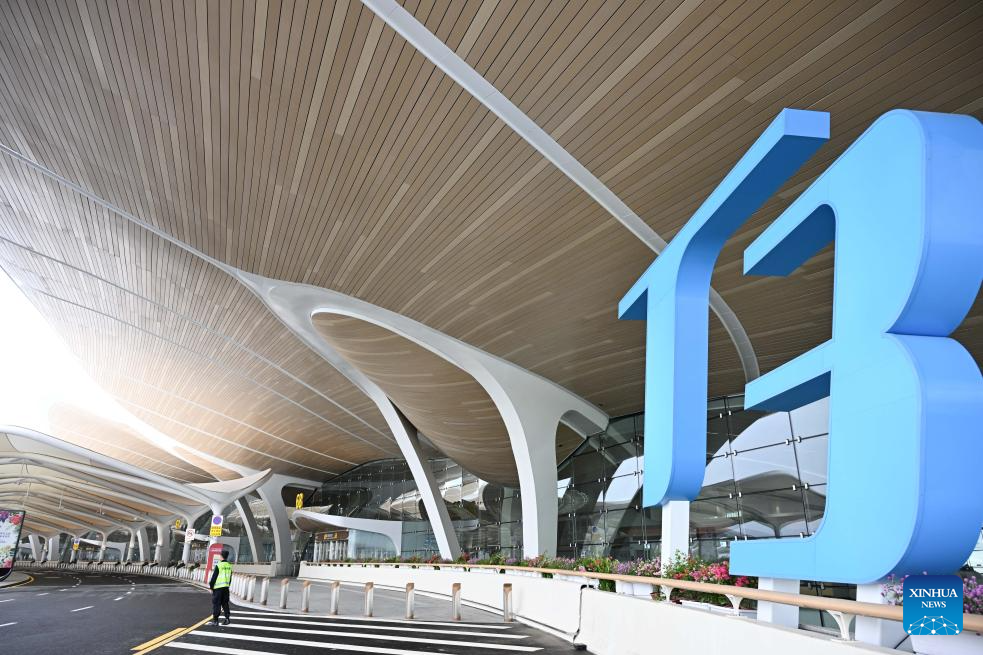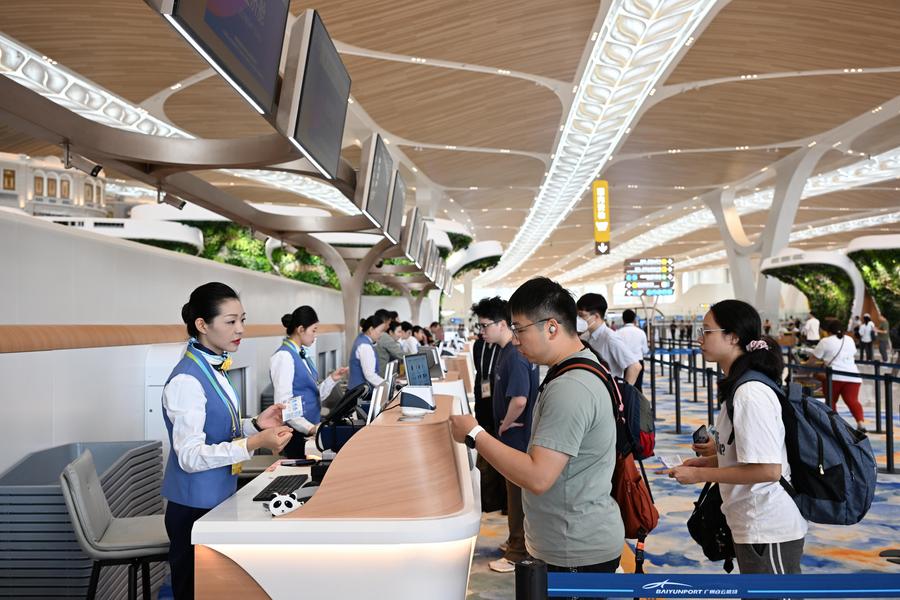Passengers check in to take China Eastern Airlines MU6308, the first flight to depart Guangzhou Baiyun International Airport Terminal 3 in Guangzhou, south China's Guangdong Province, Oct. 30, 2025. [Photo/Xinhua]
The Baiyun airport in Guangzhou, capital of south China's Guangdong Province, on Thursday officially put into operation its Terminal 3 and fifth runway, making it China's first civil airport to operate five commercial runways.
The expansion of the Guangzhou Baiyun International Airport, one of the country's three major international aviation hubs, is another step toward building a world-class airport cluster in the Guangdong-Hong Kong-Macao Greater Bay Area.

This photo taken on Oct. 30, 2025 shows an exterior view of Guangzhou Baiyun International Airport Terminal 3 in Guangzhou, south China's Guangdong Province. [Photo/Xinhua]
In the near future, the airport will be able to handle 120 million passengers and 3.8 million tonnes of cargo and mail. With a terminal capacity of 140 million passengers and 6 million tonnes of cargo, it will be among the world's busiest airports in both categories.
The expansion project took five years and cost 53.77 billion yuan (about 7.6 billion U.S. dollars). It also includes an integrated transport center designed to improve air, rail and road connectivity.

This photo taken on Oct. 24, 2025 shows an interior view of Guangzhou Baiyun International Airport Terminal 3 in Guangzhou, south China's Guangdong Province. [Photo/Xinhua]
The transport hub will be connected to six high-speed rail lines, five intercity railways, two metro lines and two expressways. Passengers will be able to reach other major airports in the Guangdong-Hong Kong-Macao Greater Bay Area within an hour using the rail network.

This photo taken on Oct. 24, 2025 shows jetways at Guangzhou Baiyun International Airport Terminal 3 in Guangzhou, south China's Guangdong Province. [Photo/Xinhua]
The Outline Development Plan for the Guangdong-Hong Kong-Macao Greater Bay Area, released in February 2019, proposes the construction of a world-class airport cluster.
The region's aviation landscape now comprises three hub airports (Guangzhou, Shenzhen, and Hong Kong), two major airports (Zhuhai and Macao), and two regional airports (Huizhou and Foshan). These airports collectively serve over 200 global destinations, and in 2024, they handled over 200 million passengers.


 Share:
Share: 





 京公網安備 11010802027341號
京公網安備 11010802027341號